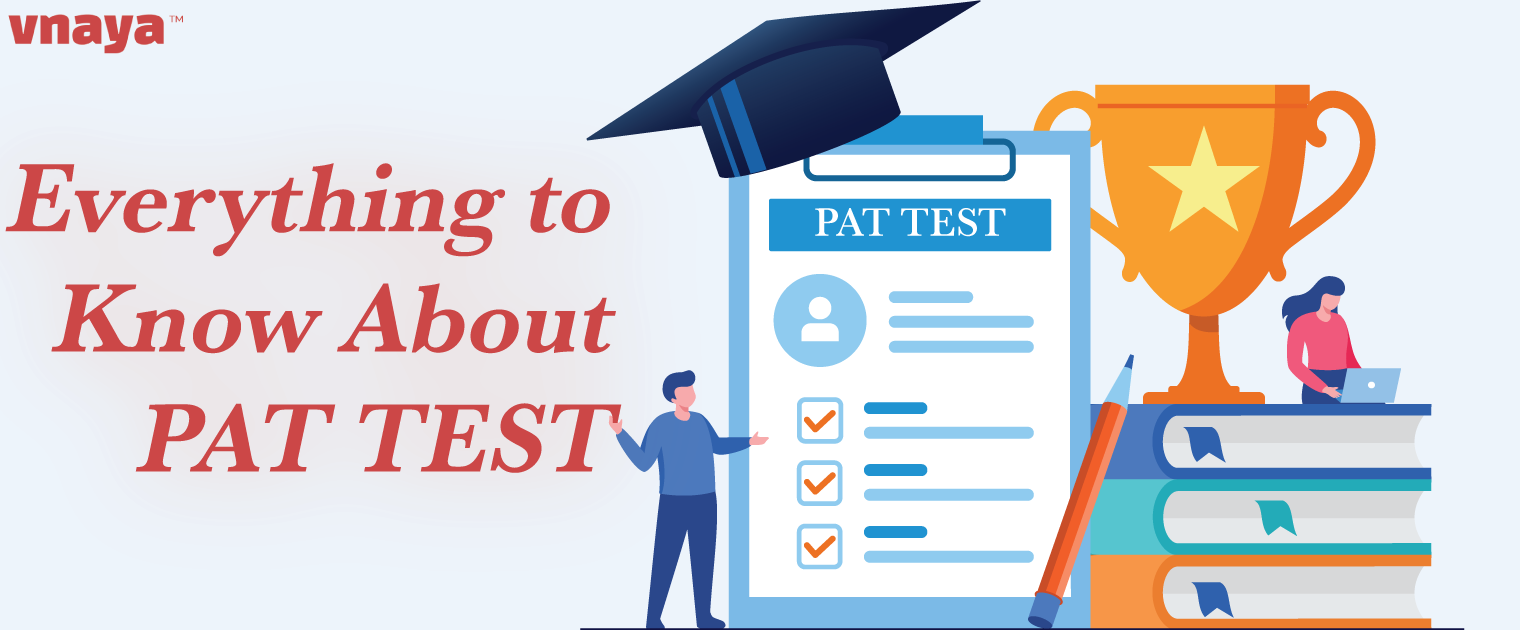Parenting(Age 5 to 8) | Jul 13, 2021
Everything to Know About PAT TEST

Progressive Achievement Tests (PAT) are a series of standardized assessments designed specifically to provide objective, norm-referenced analysis of students’ skills and understandings of key subjects to their teachers, usually through planned instruction. These tests assess students' mathematics, listening comprehension, reading comprehension, reading vocabulary, punctuation, and grammar. The PAT Test is a 40–50 minute assessment that is easy to conduct, assess and score. The questions in PATs are all MCQs. Some of these tests can be taken online.
What does the PAT indicate?
Each PAT is based on a scale that shows the skill and knowledge level of a student and can be used to track the progress of the student, class, and the year group, over time. These scores can also be used to indicate teachers’ and students’ strengths and needs and can offer insights into possible next steps. An online marking and analysis service, available by subscription provides complete reports at the student, class, question, and cohort level.
Uses for PAT:
The test course is based on the year-wise curriculum of the students. The score scale can also reflect the curriculum levels so that parents and teachers can see what curriculum level students are working at. The purpose of achievement testing is to measure some aspects of the intellectual competence of students.
Teachers use achievement tests to:
- Establish what students are capable of, then challenge them at the appropriate level for effective learning.
- Assess at recommended intervals to measure learning growth over time. To Report at the year level, individual or group can be quick and easy.
- Provide educational and vocational guidance.
- Evaluate their effectiveness and proficiency.
- Amend and revise the curriculum and selection of the most suitable methods of teaching.
- Determine the student’s all-around mental ability and provide motivation for more learning.
- Give reports to the guardians and undertake a comparative study of educational levels of different schools.
Characteristics of Achievement Tests:
There are various categories of Achievement tests, based on method, purpose, time, form, and subject. Achievement tests can have different characteristics like an oral test, written test, and practical test. These tests are based on the students’ level, abilities, interests, and aptitudes. They are also very economical besides being reliable and valid and are useful from the practical viewpoint. They have wider content and possess all characteristics of standardized tests, such as scoring key, manual of instructions, norms, etc.
Categories of PAT Tests
The Progressive Achievement Test helps all students show progress in their learning by using the results of cutting-edge research to upgrade student assessments, teaching resources, and professional learning. Assessing a student’s knowledge, skills, and understanding of the subject helps to pinpoint their position in the journey of knowledge— and what they need to progress.
- Mathematics: assessing the students of year levels 3–10 in the areas of number knowledge, number strategies, algebra, geometry and measurement, and statistics. This assessment can be done online.
- Listening comprehension: using short stories, novel extracts, poems, and non fiction texts to assess a student's comprehension of texts read to them. It helps teachers to detect poor listening skills and comprehension of students. The tests are for assessing year levels 3–10.
- Reading comprehension: tests students' reading comprehension skills across a range of texts including narrative, instructional, persuasive, and poetic. The tests are for years 4–10.
- Reading vocabulary: indicates students' ability to comprehend the words they read and use vocabulary in context. The tests are for levels 4-10. Punctuation and grammar assess students' ability to use the grammatical conventions of standard English, including punctuation for year levels 4-10.
Markings And Scores in PATs:
The PATs can pinpoint definite areas where the child is doing well or poorly. The PAT is just one test of many that will build a picture of the child for the teacher. PAT results can be a good starting point in helping to understand the child’s educational progress.
The PAT uses a scale score to calculate a student's achievement. The items within the test are given a score that depends on their level of difficulty. The raw score is converted into scales depending on difficulty levels and this is used to calculate achievement.
Scales
Students receive a raw test score, which is converted into a scale. These are further classified into four separate PAT scales: the PAT: Reading Comprehension scale, the PAT: Listening Comprehension scale, the PAT: Mathematics scale, and the PAT: Reading Vocabulary scale. These scales are reported within a range of plus or minus, which indicates the expected score of a child if he/she should repeat the test.
Score comparison and Stanines
Once a raw score has been converted to a scale score, a student’s achievement can be compared with the achievements of nationally representative groups of students at different year levels (known as national reference groups). Comparisons can also be done using what is known as stanines, with the lowest performance level being stanine one and the highest stanine nine. For example, a student's stanine level is six, and since the average stanine level is five, the said student would be considered above average.
Conclusion
Achievement tests are a range of tests, where scores determine the qualification levels of a student. High achievement scores are indicative of a high level of educational proficiency, and that the student is qualified for advanced instruction. Conversely, low achievement scores can indicate the need for remedial measures or repeating the course grade level. The achievement tests are significant in excluding unqualified applicants. In any situation, where distinguishing between persons of higher comprehensive skills, from those of lower competence, progressive achievement testing is considered compulsory.















Post a Comment: